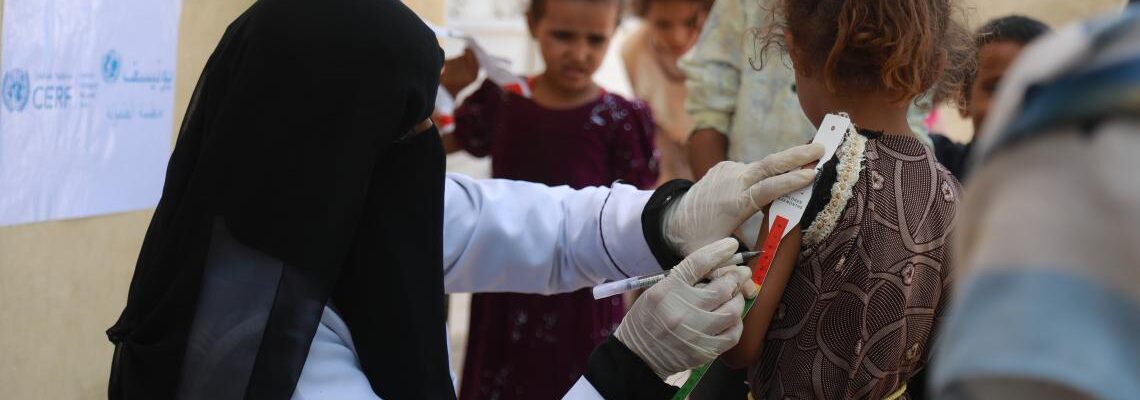CERF funding provides a lifeline to Yemenis during a devastating year
Yemen | 2023 | CERF
Yemen. Yemen faces one of the world’s most severe humanitarian crises. Over 21 million people will need humanitarian help in 2023.
The 2022 humanitarian appeal received over US $2.2 billion in donations, allowing humanitarian agencies to reach 11 million people across the country. Thanks to this donor support, humanitarians could stave off the worst last year.
Funding from the Central Emergency Response Fund (CERF), the UN’s emergency fund, was a critical part of this – not least by jump starting response following new displacements in Ma’arib to reach over 430,000 people with assistance.
CERF funding came through two allocations: a Rapid Response allocation of US $20 million to respond to new displacements in and around Ma’rib, allowing for a quick scale up of response when needs were high; and a further Rapid Response allocation of US $20 million for economic disruption, including to sustain health services during a period of increased need.
Conflict has devastated the country’s infrastructure, especially in high-risk areas like Ma’rib,” Dr. Loay Mohamed Sulaiman, the director of Kara general hospital, explained. CERF funding supported a WHO-administered feeding center at the hospital.
“The urgency and severity of health needs of internally displaced populations have pushed the operational capacities of our health facilities to their absolute limit…gaps in support affect the services we provide to a large extent,” Dr. Sulaiman added.
Mobile clinics for the newly displaced, and infrastructure support to hospitals
With CERF funding, UNICEF could fund mobile clinics and health teams to offer health and nutrition services to people newly displaced in Ma’rib, as well as to host communities.
The clinics meet a variety of needs, says Dr. Abdullah Al-Wahashi, a general physician. “[They] offer immunization services, reproductive health services, prenatal care, and therapeutic feeding services for malnourished children,” he explains.
CERF funding supported critical nutrition surveillance and support. In Bayt Al-Faqih, Hudaydeh, Saeeda took her baby girl, Jouri, to the clinic, which is supported by CERF and other donors through UNICEF. It was Jouri’s fourth visit to follow up on her severe acute malnutrition.
A health worker at the clinic, Hana’a, said she sees about 80 children a day. Thankfully, Jouri is doing well with treatment. She’s gaining weight, and her mom brings her each month to check on her and get therapeutic food.
Funding for health and nutrition services such as these is important, as 540,000 children in Yemen risked losing their lives to malnutrition in 2022.
CERF funding supported the World Health Organization to respond in 6 districts in Ma’rib, after the new displacements and a sudden disruption in basic health care. Even as demand for hospitals and clinics increased, the money ensured medical care and nutrition services remained available.
The money went to incentive payments for surgical staff and was also used to purchase six ambulances. The project provided fuel as well, to ensure the hospitals could operate effectively.
CERF money responded quickly to displaced populations in and from Ma’arib, and provided crucial help to support the health system through a surge in demand.
Original story (WHO)
Original Story (UNICEF – Malnutrition)
Original story (UNICEF-Mobile clinics)
Original Story (UNICEF-Vaccination)
More information on the CERF allocations
Rapid Response for economic disruption
Rapid Response for new displacements
